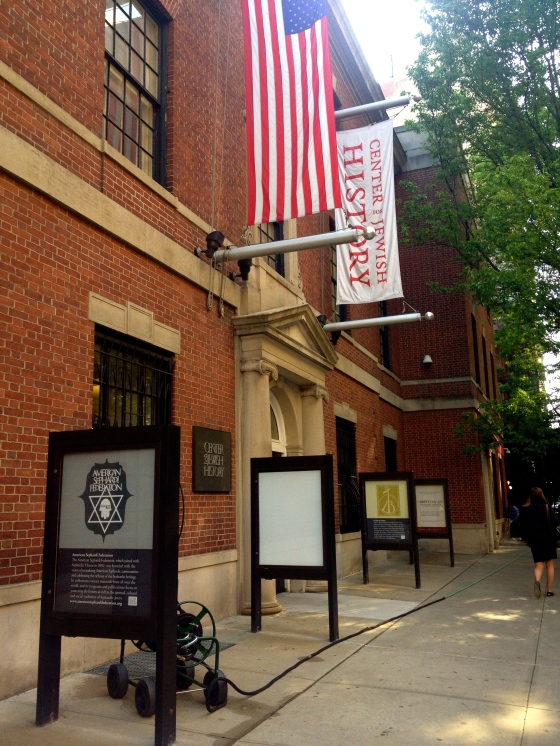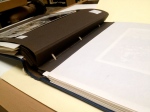Being an Honors Scholar has been an invaluable research experience. Being a part of this program allowed me to explore the topic I am passionate about in ways I might have not otherw ise been able to do.
ise been able to do.
I began this project by participating in the Seminar on Archival and Historical Research at the Center for Jewish History in New York City, May 19-22. As one undergraduate alongside about ten graduate students, I attended lectures, group discussions, and workshops led by historians from across the nation, Center staff, and advanced Ph.D. students of history and Jewish Studies. I received in depth instruction from archivists and librarians on how to navigate the archives, use the reading room, and general archive processes.
Furthermore, during my time at the Center for Jewish History, I collected source materials integral to a study of German WWII photography. I examined original photo albums by members of the German military, a scrapbook created by the fiancé of an American soldier stationed in South-East Asia during WWII, a series of photographs taken by an Austrian Jew who fought for the British army also during WWII, and vacation albums compiled by ordinary Austrian citizens in the 1930s.
 In the remaining weeks following the seminar, I continued to collect primary materials and began to situate them in the secondary literature, alongside materials I previously consulted in Washington DC and Berlin, Germany. This program gave me the freedom to expand my literary review for this project beyond my capability to do so during a regular semester. Situating German WWII photographs in terms of their continuities and discontinuities meant that I had to expand the parameters of time, place, and cultural norms; by extension, my secondary literature review needed to be quite extensive. In the nine-week period, I not only read scholarly works on German photography during the Second World War. I expanded my review to include scholarly work on colonial photography (particularly French colonial photography starting in the late nineteenth century), German advertising and commercial culture in the 1920s and 1930s, the Spanish Civil War, and World War One. The Program enabled me to conduct a literary review I would not have been able to do as extensively during the semester, which allowed me to develop my thinking about the framework of the project and ultimately my argument. As a result, I have been able to craft the basic sections of my thesis, and am looking forward to the next steps as I begin to write.
In the remaining weeks following the seminar, I continued to collect primary materials and began to situate them in the secondary literature, alongside materials I previously consulted in Washington DC and Berlin, Germany. This program gave me the freedom to expand my literary review for this project beyond my capability to do so during a regular semester. Situating German WWII photographs in terms of their continuities and discontinuities meant that I had to expand the parameters of time, place, and cultural norms; by extension, my secondary literature review needed to be quite extensive. In the nine-week period, I not only read scholarly works on German photography during the Second World War. I expanded my review to include scholarly work on colonial photography (particularly French colonial photography starting in the late nineteenth century), German advertising and commercial culture in the 1920s and 1930s, the Spanish Civil War, and World War One. The Program enabled me to conduct a literary review I would not have been able to do as extensively during the semester, which allowed me to develop my thinking about the framework of the project and ultimately my argument. As a result, I have been able to craft the basic sections of my thesis, and am looking forward to the next steps as I begin to write.